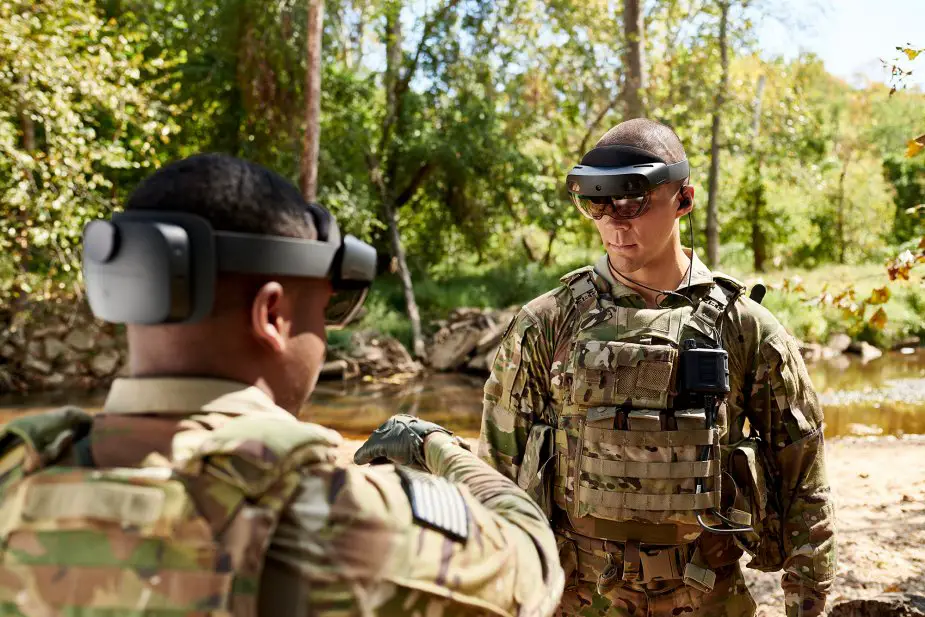Third Integrated Visual Augmentation System evaluation slated for July 2020
The Army just conducted a test of the Integrated Visual Augmentation System (IVAS) in November and plans to conduct a third evaluation in July to inform a low-rate initial production decision by 2021. Devon L. Suits, Army News Service, reports on U.S. Army’s website.

Soldiers conduct a touchpoint evaluation of the Integrated Visual Augmentation System at Fort Picket, Va., in November 2019 (Picture source: U.S. Army)
Depending on the result of the current continuing resolution, Program Executive Office Soldier will proceed into Soldier touchpoint three next year, followed by a final evaluation in 2021, said Brig. Gen. Anthony Potts, who heads PEO Soldier. The general discussed the future of the IVAS program during an Association of the U.S. Army "Hot Topic" forum Wednesday. "We had collected over 2,000 hours of soldier feedback within the first few months," Potts said. "We turned around and went right back into our planning sprints. These [planning sprints] are critical for all partners involved, the test community, and with our Microsoft partners."
The IVAS is a new capability that allows soldiers to regain and maintain overmatch within a multi-domain environment, through a wide range of unpredictable battlefield conditions, officials said. The Army conducted its first Soldier touchpoint in the spring, along with a second evaluation last month. With a wide range of features, the IVAS provides soldiers with a see-through digital display, allowing users to remotely access information without taking their eyes off the fight, officials said. The system also includes thermal and low-light sensors, rapid target acquisition and aided target identification, along with augmented reality and artificial intelligence capabilities.
Overall, the Soldier touchpoint process has played a critical role in shaping the device requirements, Potts said. For example, the IVAS team was once working to increase the device's range to 900 meters at night, which resulted in a larger head-worn device. Through the feedback process, soldiers questioned the necessity behind PEO Soldier's 900-meter requirement and asked for improved peripheral vision to help increase their situational awareness, Potts explained.
PEO Soldier opted to lower the IVAS range to around 300 meters and increased the field of view from 40 to 80 degrees. With all the changes, soldiers could still use their weapon's thermal optics to see targets at 900-meter distances, Potts said. "We have to listen when a soldier says 'this [device] sucks,'" Potts said. "It may not be technical, but it has great meaning. We could spend a lot of money building something that meets every one of our requirements, but if the soldiers don't love it and won't wear it, they stick it in their Conex box," he added. "Then we have wasted our government's dollars, and we've done a disservice to our soldiers."


























